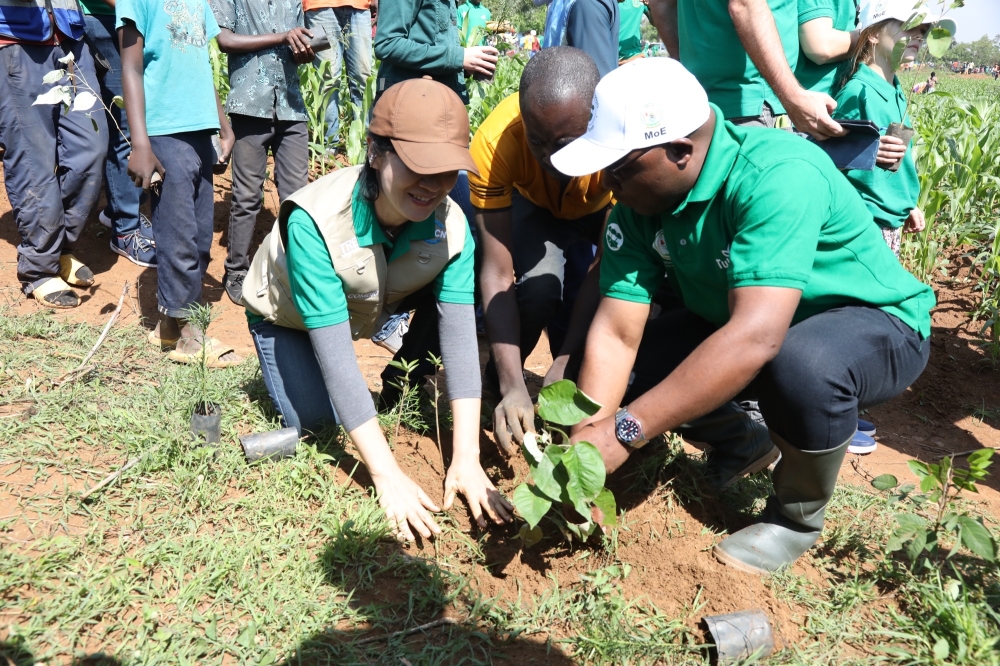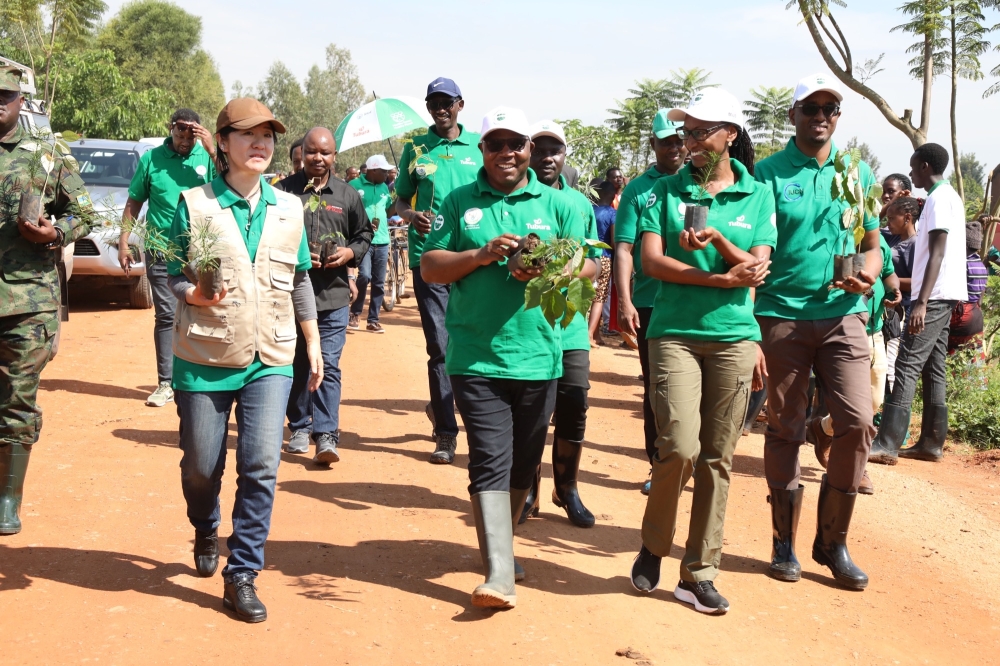

Rwanda on October 28 launched the 2023/24 national tree-planting season during which the country targets to increase and maintain forest cover with about 63 million seedlings, according to the Rwanda Forestry Authority.
The plan is also to build resilience to climate change effects.
The tree planting was done during a community work (Umuganda) activity carried out in Kagomasi cell, Gashora sector of Bugesera District, in Eastern Province.
ALSO READ: Rwanda to plant 63 million indigenous trees for carbon market
Speaking to The New Times, the Director General of Rwanda Forestry Authority, Concorde Nsengumuremyi, said that Eastern Province will account for the largest proportion (about 40 per cent) of trees to be planted, compared to other parts of the country.


"The high number of seedlings is in Eastern Province where we have around 23 million trees. The reason is that it&039;s an area which needs more efforts in terms of the number of seedlings that should be grown, not only on the farms [under agroforestry], but also along the sides of roads and some areas dedicated to forestry," he said.
He indicated that historically, 40 or 50 years ago, the area had enough forest cover but it experienced deforestation as the people cut trees in search of agricultural land. Charcoal making and firewood as well as construction also contributed to a reduction in tree cover.
The aforesaid project involves a huge funding, Nsengumuremyi said, but did not specify how much, pointing out that it also has support from various government partners including Once Acre Fund –Tubura – and the International Union for Conservation of Nature (IUCN).
He pointed out that interventions are being mobilised in line with existing projects such as the Transforming Eastern Province through adaptation (TREPA), a project that jointly executed by IUCN in collaboration with the Government of Rwanda through Rwanda Forestry Authority (RFA) and Enabel, the Belgian development agency, as executing entities.
TREPA intends to restore over 60,000 hectares of drought-degraded landscapes into climate resilient ecosystems through re-forestation, agroforestry, restoration of pasturelands, and erosion control measures in seven districts of Eastern Province including Nyagatare, Rwamagana, Kirehe, Kayonza, Gatsibo, Ngoma as well as Bugesera, according to information from the Ministry of Finance and Economic Planning.
ALSO READ: Rwanda’s longest drought in six decades: The effects on food security and lessons learnt
Kaori Yasuda, Rwanda Country Representative for International Union Conservation of Nature – IUCN, said there was a need for concerted effort to address climate change vulnerabilities in Eastern Province for both the benefits of nature and communities’ livelihoods.
"Right now, we are focusing on turning drought-degraded ecosystems into resilient landscapes by forest landscape restoration in Eastern Province. That’s because the ecosystem in Eastern Province was degraded by neglected for a long time, while ecosystem in Eastern Province has a huge potential for the fruit basket for the people of Rwanda, to address food security. And it’s also a home to 3 million people,” she said.
"So, by forest and landscape restoration in Eastern Province, we want to ensure their benefits for people and nature,” she observed.
The Minister of Local Government, Jean Claude Musabyimana, said that "in the face of the challenges caused by climate change, our commitment to tree planting must never be more critical than today.”


